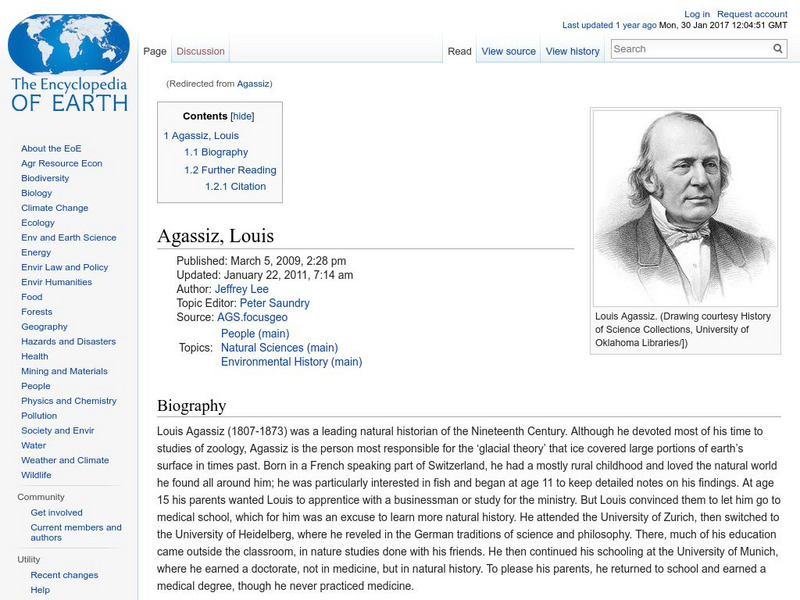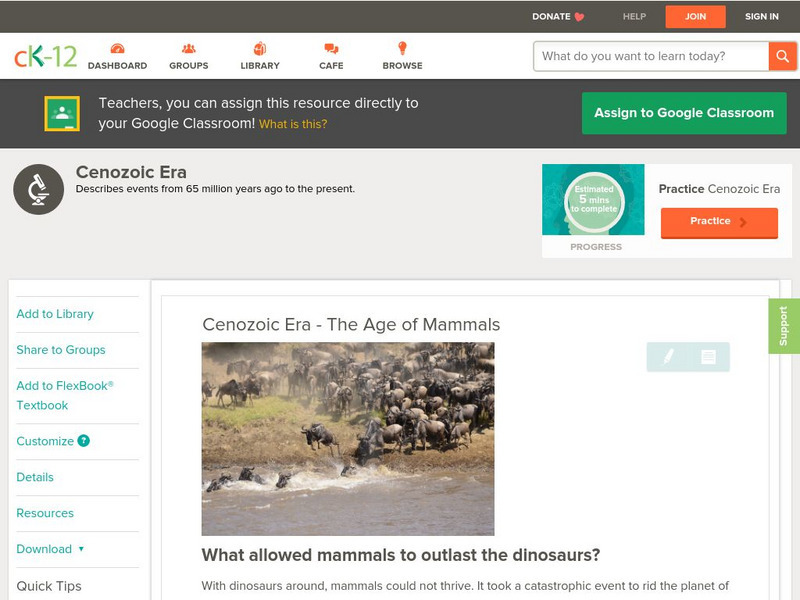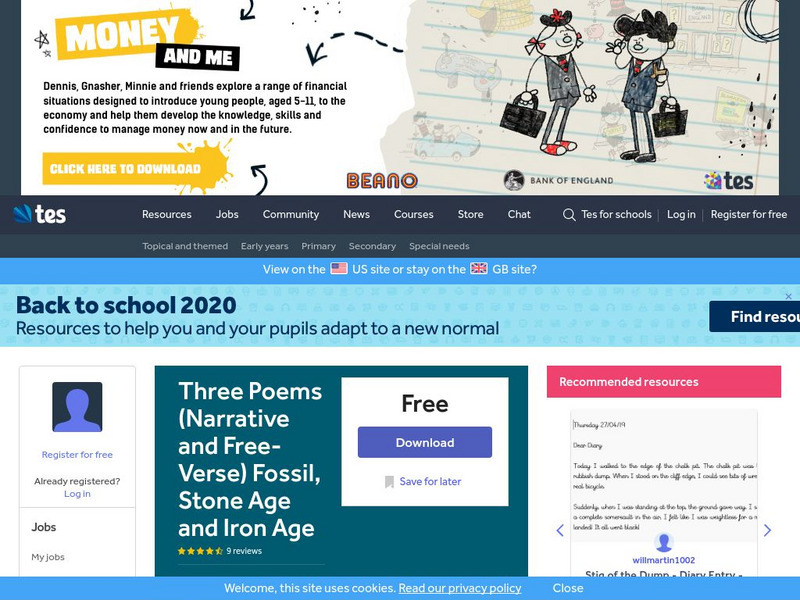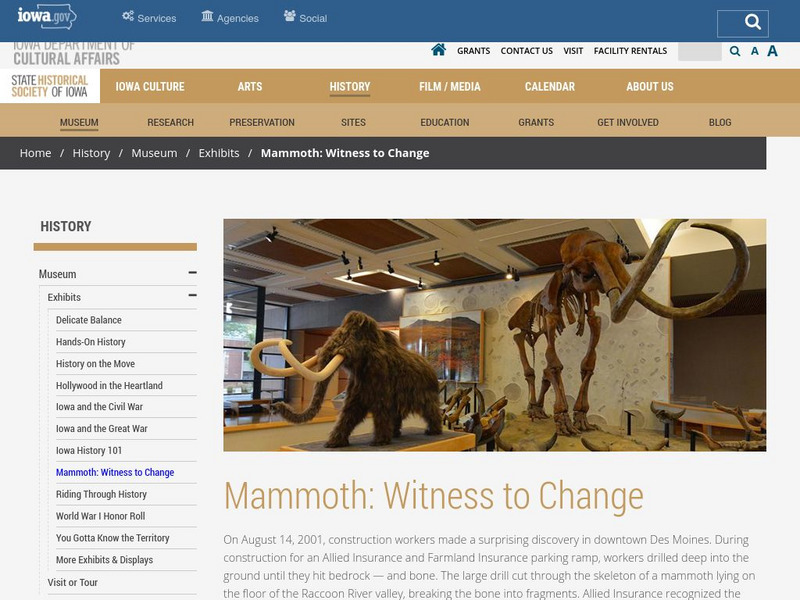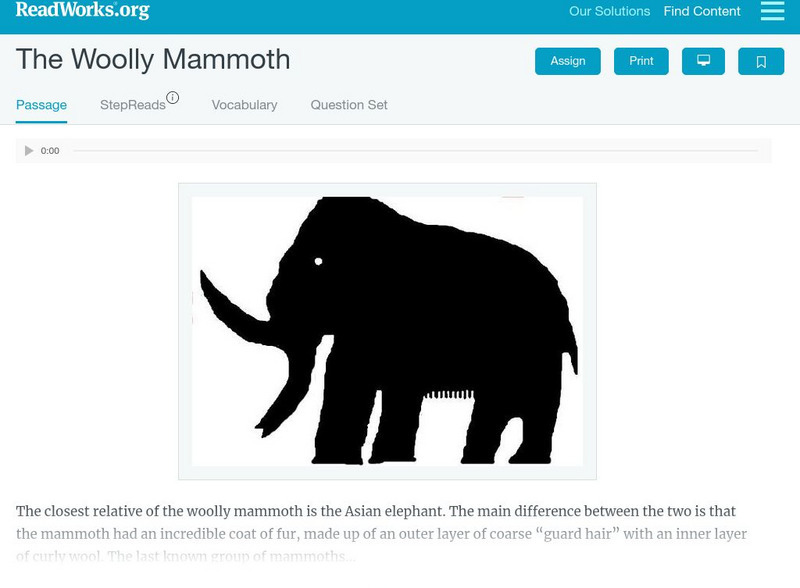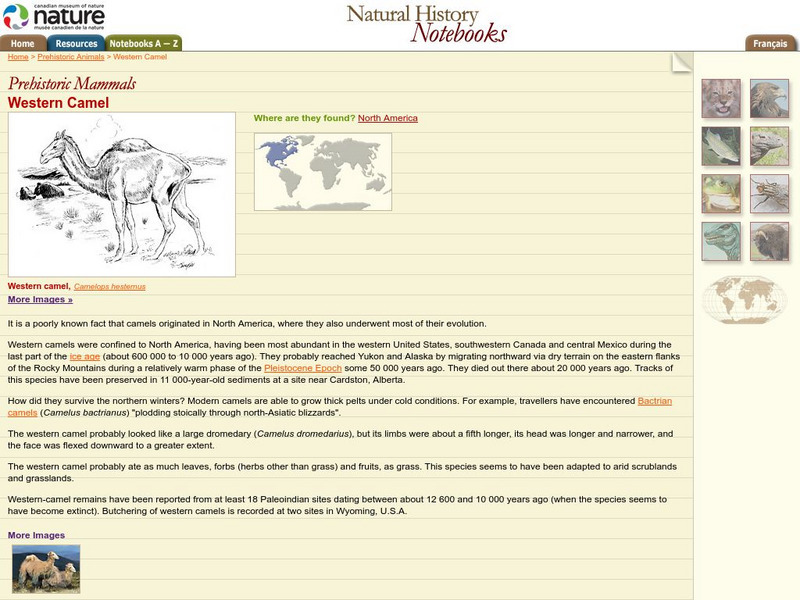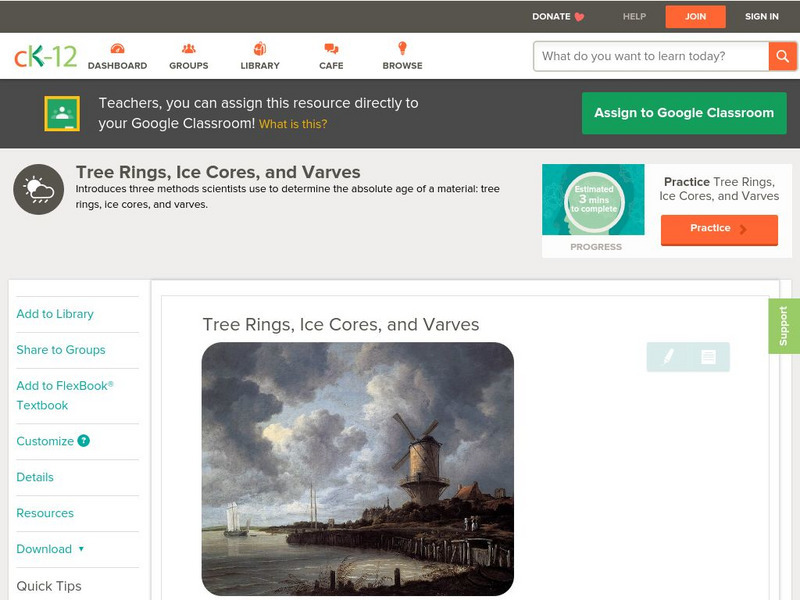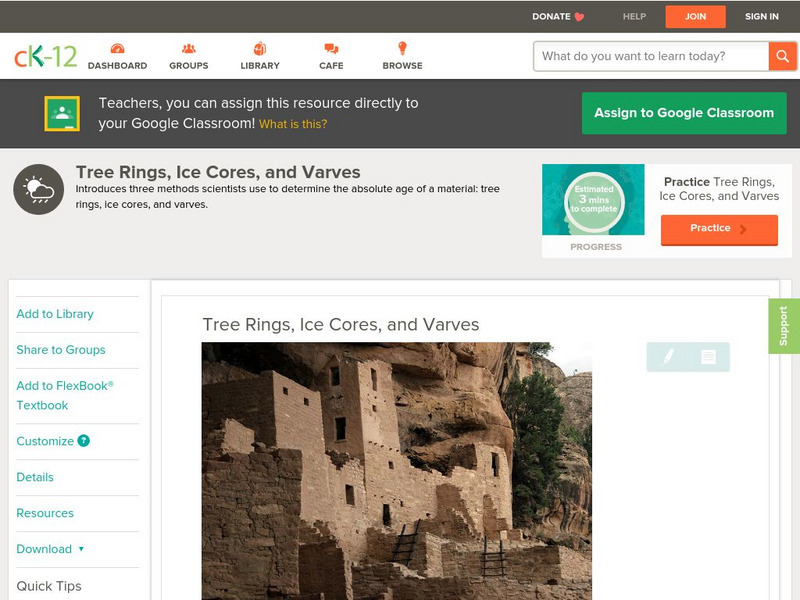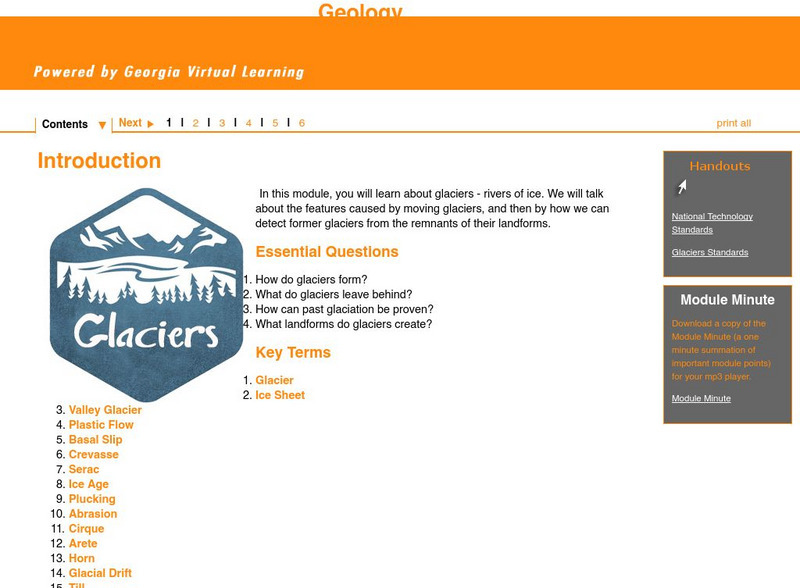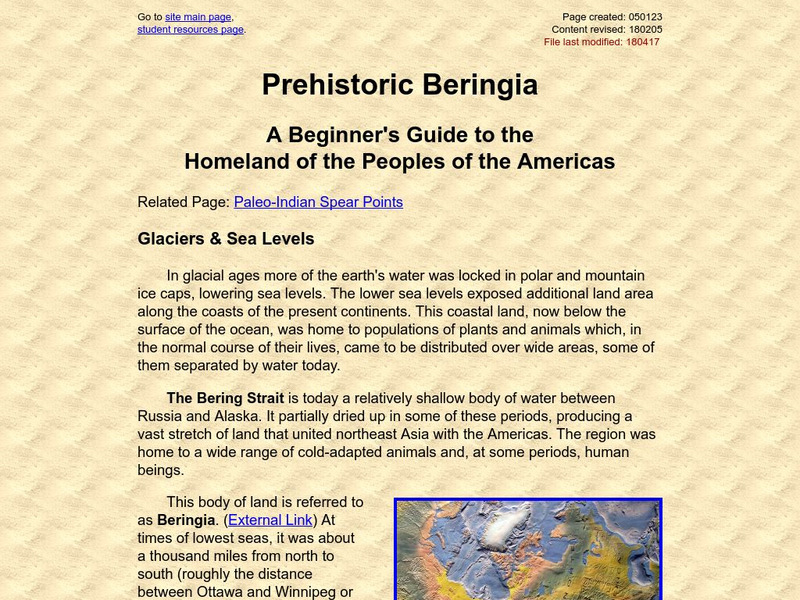TED Talks
Ted: Ted Ed: When Will the Next Ice Age Happen?
Throughout Earth's history, climate has varied greatly. What causes these swings in the planet's climate? Lorraine Lisiecki investigates.
BBC
Bbc: Science and Nature: Ice People 200,000 Years Ago
A look at Neanderthals, including their appearance, their life during the Ice Age, and their extinction. Follow suggested BBC and non-BBC links for further reading.
Other
Geoscience Research Institute: The Little Ice Age
This very detailed article examines the long-term climate changes throughout the world. Discusses agriculture and provides graphs and illustrations. Includes lots of scientific discussion.
Indiana University
Indiana Univ. Bloomington:geo Notes: Moraines: Evidence of Ice Age Glaciers [Pdf]
Explains what moraines are, how they are formed, some types, and where they are found in Indiana.
University Corporation for Atmospheric Research
Ucar: Little Ice Age: Where Have All the Glaciers Gone?
In this lesson, students examine images of alpine glaciers to develop an under-standing of how glaciers respond to climate change.
Encyclopedia of Earth
Encyclopedia of Earth: Evolutionary Biology: Agassiz, Louis
Biography of Louis Agassiz, a natural historian and a contemporary of Charles Darwin. He was most famous for developing his theory of an Ice Age. Agassiz argued vehemently against the theory of evolution, based on his interpretations of...
Other
Adriaen Block, the Discovery of Long Island Sound and the New Netherlands Colony
An interesting and comprehensive essay on Adriaen Block, the development of New Netherlands, Dutch trade, and the impact of the Little Ice Age in Europe on fur trade in North America.
Children's Discovery Museum
Children's Discovery Museum of San Jose: Mammoth Discovery: Meet Lupe
Meet Lupe, a young mammoth who lived during the Ice Age, and learn all about her existence during that time period. Take a virtual trip to the actual mammoth dig site in San Jose and see what the scientists discovered.
The Field Museum
Field Museum: Exhibits: Evolving Planet: Quaternary
Delve into the details of the Quaternary Period of the Cenozoic Era, which presents enlightening scientific data about the present-day ice age and the evolving planet.
CK-12 Foundation
Ck 12: Biology: Cenozoic Era the Age of Mammals
[Free Registration/Login may be required to access all resource tools.] Covers the Cenozoic Era, the age of mammals.
TES Global
Tes: Three Poems (Narrative and Free Verse) Fossil, Stone Age and Iron Age
[Free Registration/Login Required] These narrative and free verse poems describe fossils, the Stone Age, and Iron Age. Entertaining graphic features accompany the poems.
PBS
Nova: The Big Chill
Explore some of the explanations for the ice ages that have occurred in the Earth's history. The explanations are all related to conditions caused by plate tectonics.
Curated OER
Etc: Maps Etc: Australia and the West Pacific in the Ice Age, 20,000 To10,000 Bc
A map showing Australia and the Western Pacific in the Glacial Age (the Maximum of the Fourth Ice Age, about 50,000 years ago - Wells). While the waters were held up in the polar ice caps, the sea-level was low enough to enable...
Other
Read Works: How Glaciers Change the World [Pdf]
Students read about how glaciers created land forms such as mountains and lakes during and after the Ice Age. A question sheet is available to help students build skills in reading comprehension.
Other
State Historical Society of Iowa: Mammoth: Witness to Change
An exhibition documenting the discovery of two mammoths and a mastodon, found in Wisconsin and Iowa. The Hebior mammoth was particularly significant as the excavation showed evidence that the mammoth had been killed by humans. Background...
Read Works
Read Works: The Woolly Mammoth
[Free Registration/Login Required] An informational text about the woolly mammoth, their importance to humans during the Ice Age, and possible reasons why they became extinct. A question sheet is available to help students build skills...
Canadian Museum of Nature
Canadian Museum of Nature: Western Camel
Read about this extraordinary mammal, the Western Camel, that originated in North America during the ice age. A fascinating article with many additional sites to explore.
ClassFlow
Class Flow: Ice Age Vocabulary Game
[Free Registration/Login Required] This flipchart is an interactive flashcard game. At the end, students can test themselves with a matching activity.
CK-12 Foundation
Ck 12: Earth Science: Tree Rings, Ice Cores, and Varves
[Free Registration/Login may be required to access all resource tools.] How scientists can determine age and other features of a rock or material it contains.
CK-12 Foundation
Ck 12: Earth Science: Tree Rings, Ice Cores, and Varves
[Free Registration/Login may be required to access all resource tools.] How scientists can determine age and other features of a rock or other material.
Curated OER
Etc: Maps Etc: The Great Ice Sheet, the Great Ice Age
A relief map from 1910 showing the southern extent of the Great Ice Sheet in the United States during the Great Ice Age.
Georgia Department of Education
Ga Virtual Learning: Geology: Glaciers
In this interactive tutorial, you will learn about glaciers - rivers of ice. Learn about the features caused by moving glaciers.
Canadian Museum of Nature
Canadian Museum of Nature: American Mastodon
Did you know that the upper tusk on the mastodon extended 2 metres (7ft)? This is just one of the interesting facts presented about this mammal that was one of the largest living animals during the ice age.
University of California
Beringia Chronology: Prehistoric Beringia
The last ice age exposed the ocean floor between Asia and North America for thousands of years. During this time, Nomadic tribes from Asia used the "land bridge" to migrate into North America.



![Indiana Univ. Bloomington:geo Notes: Moraines: Evidence of Ice Age Glaciers [Pdf] Handout Indiana Univ. Bloomington:geo Notes: Moraines: Evidence of Ice Age Glaciers [Pdf] Handout](https://d15y2dacu3jp90.cloudfront.net/images/attachment_defaults/resource/large/FPO-knovation.png)
